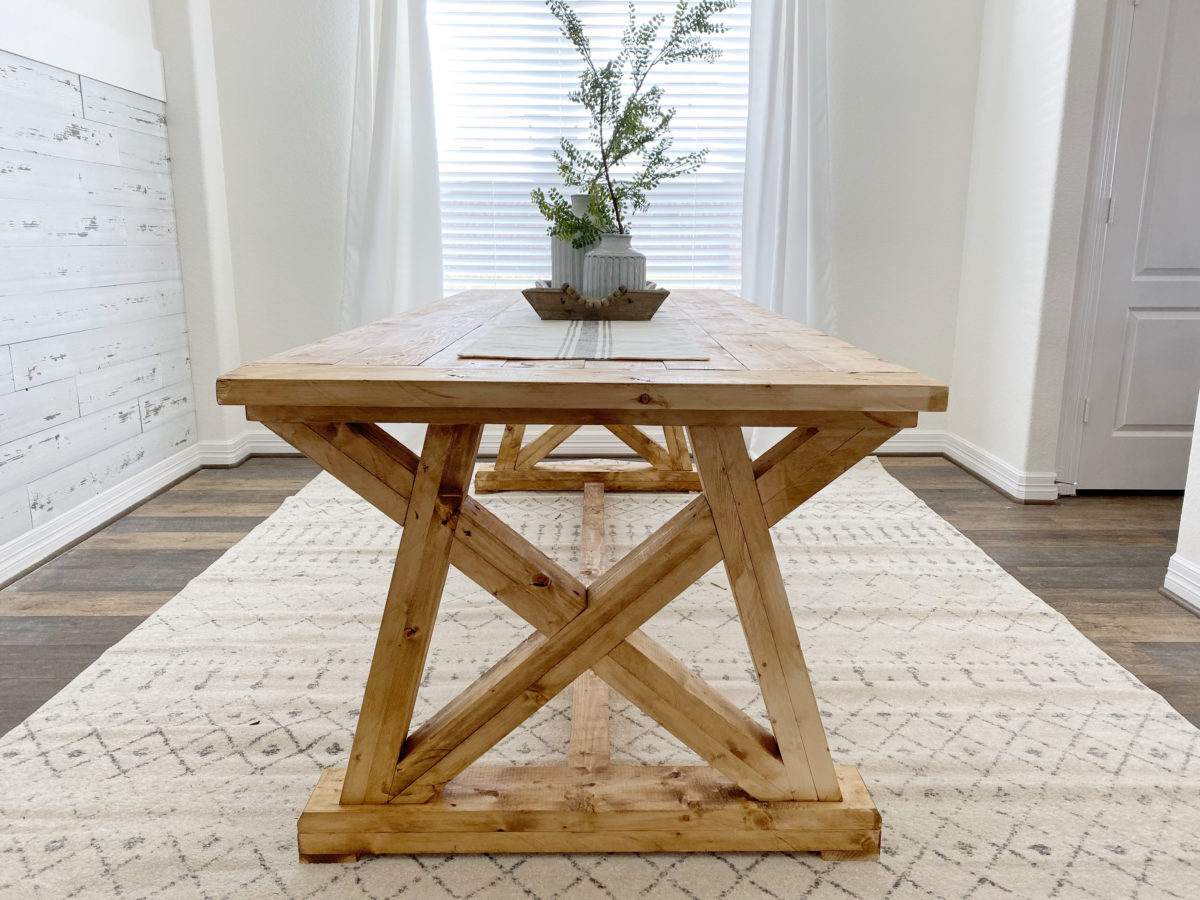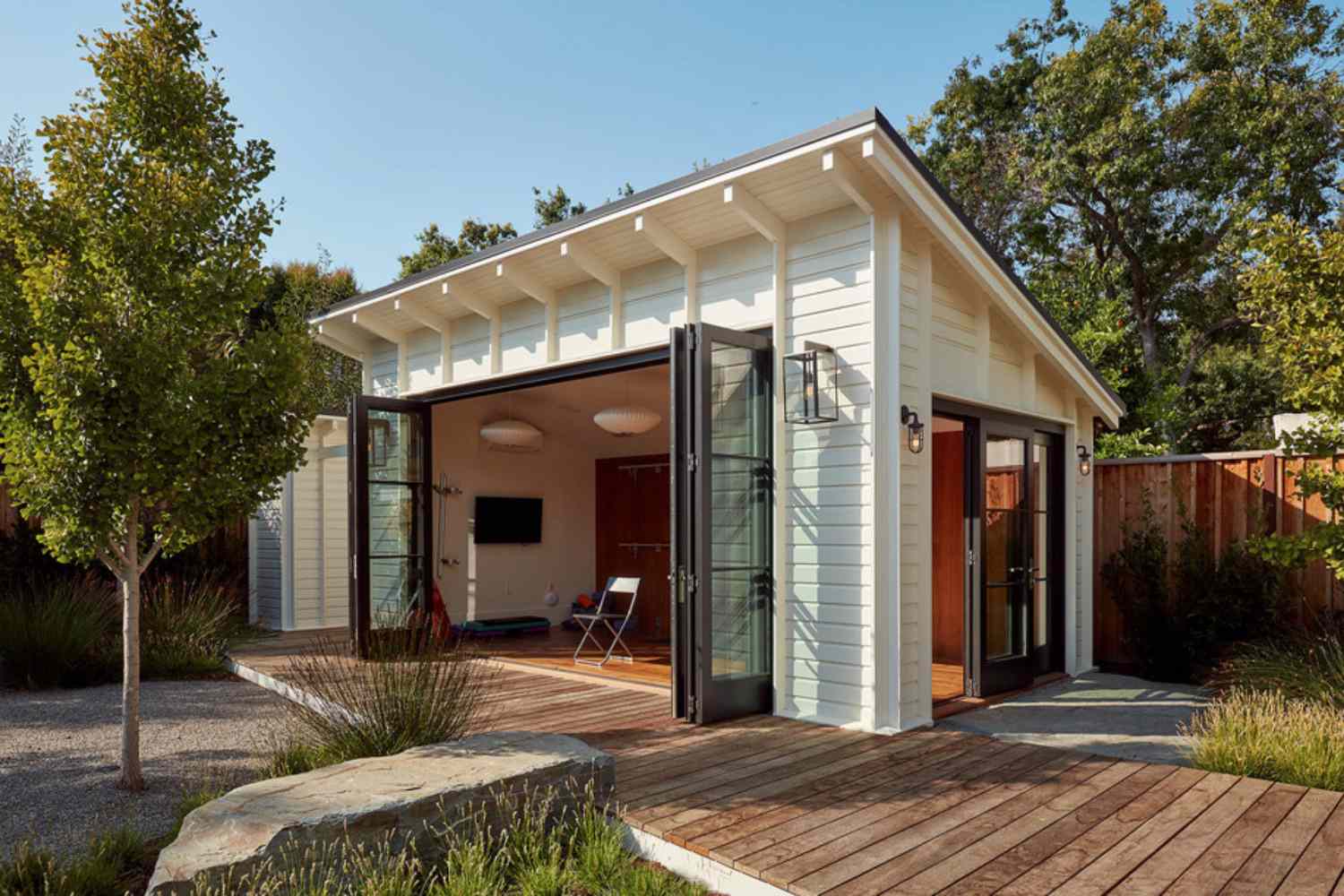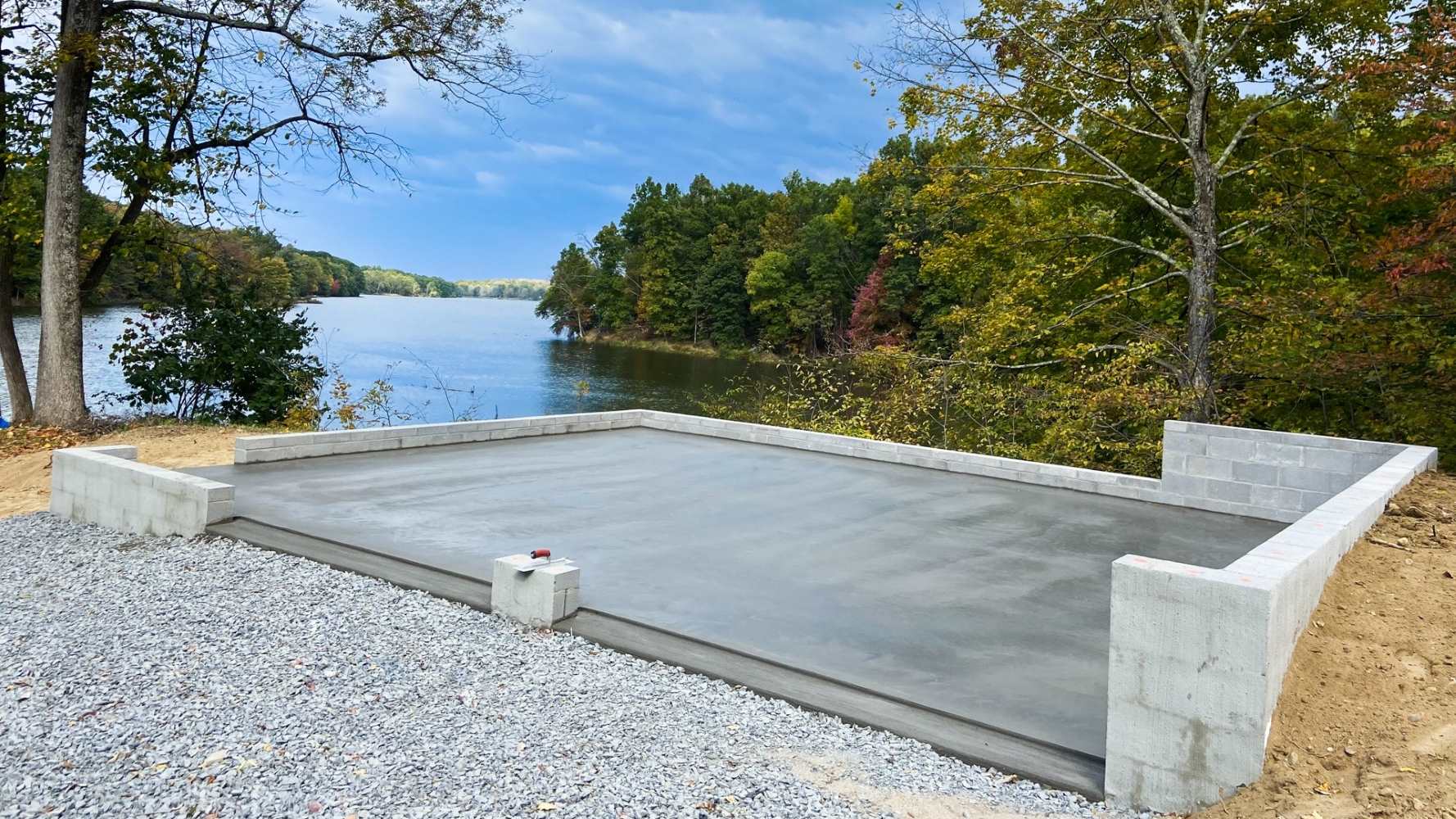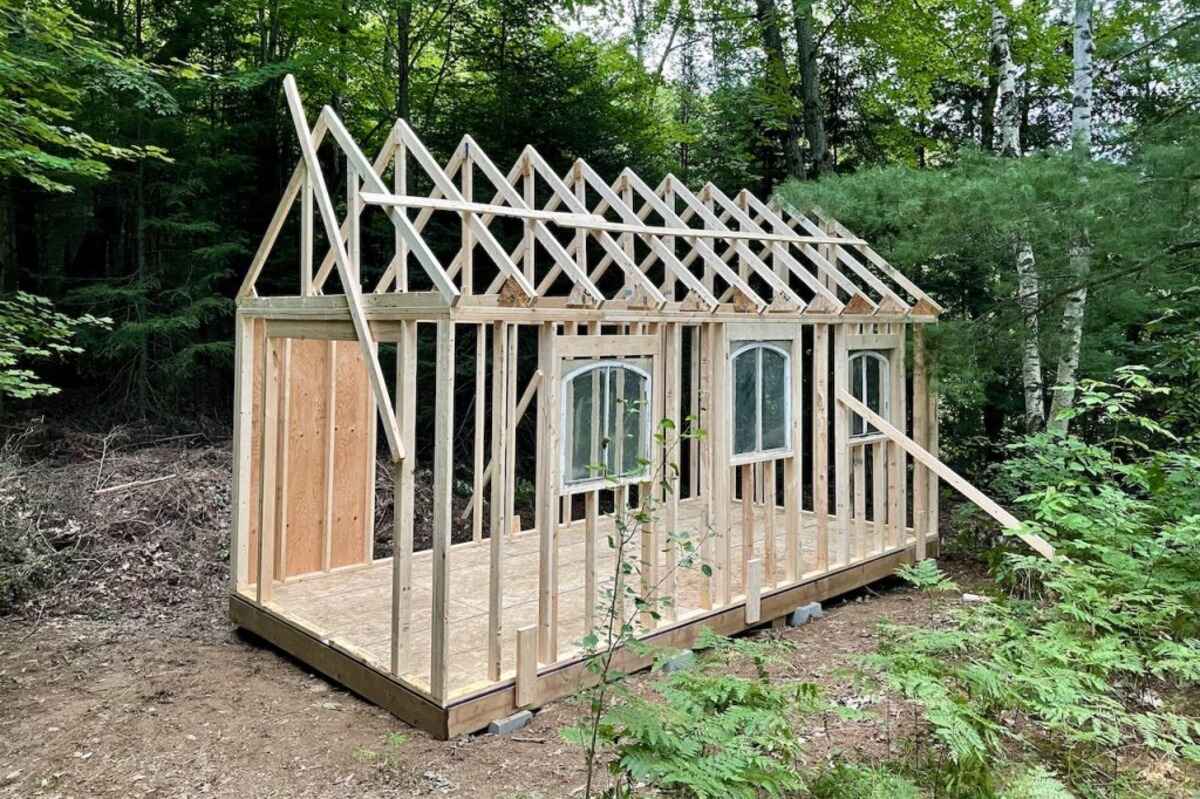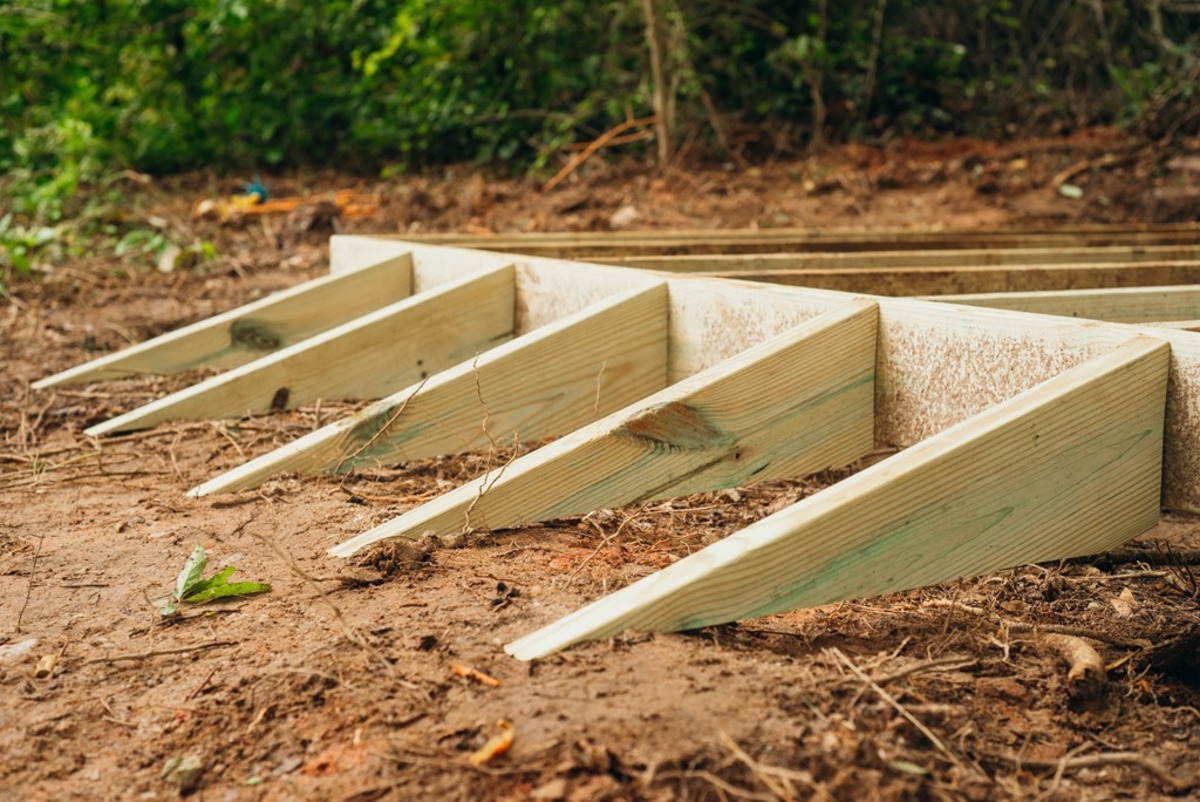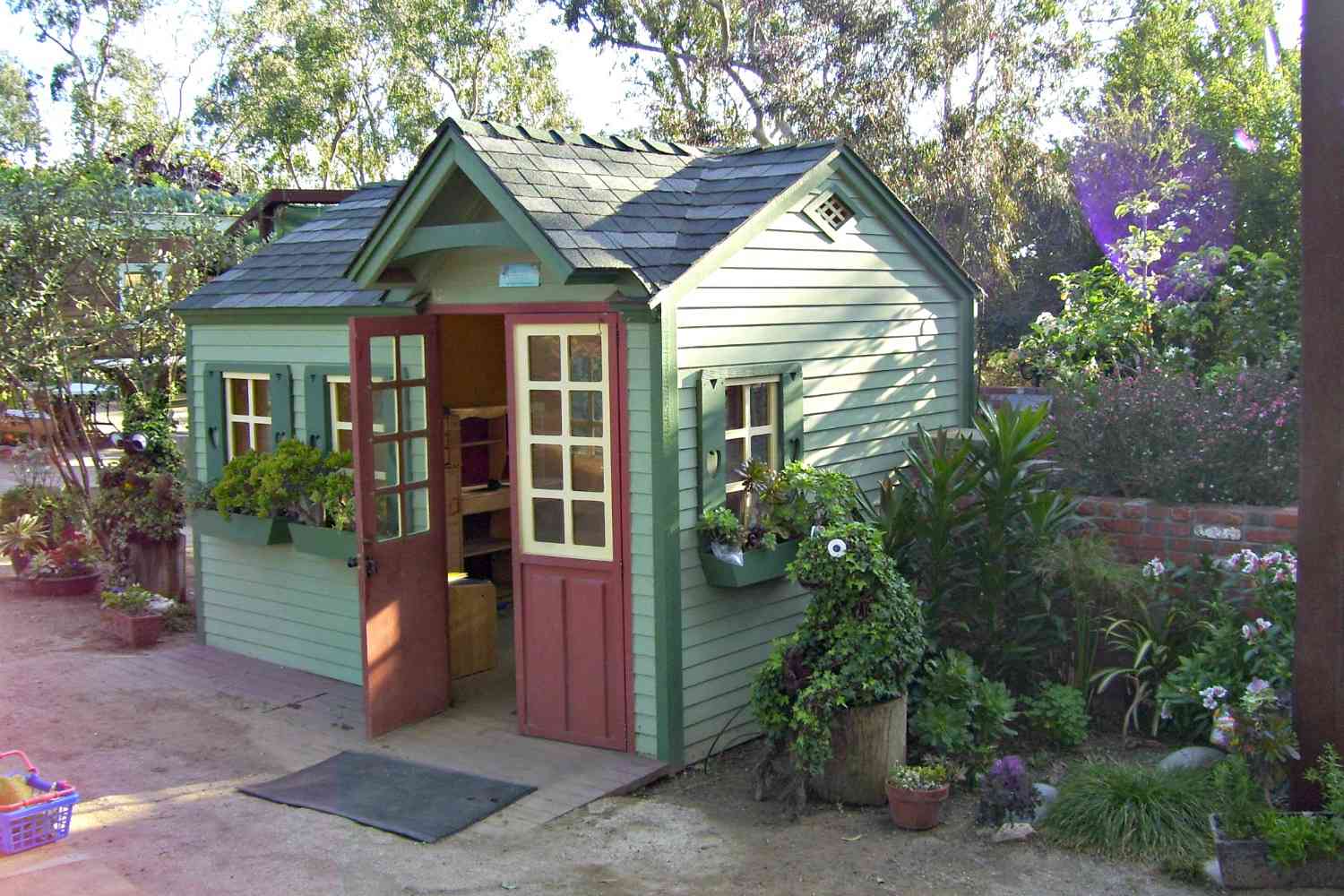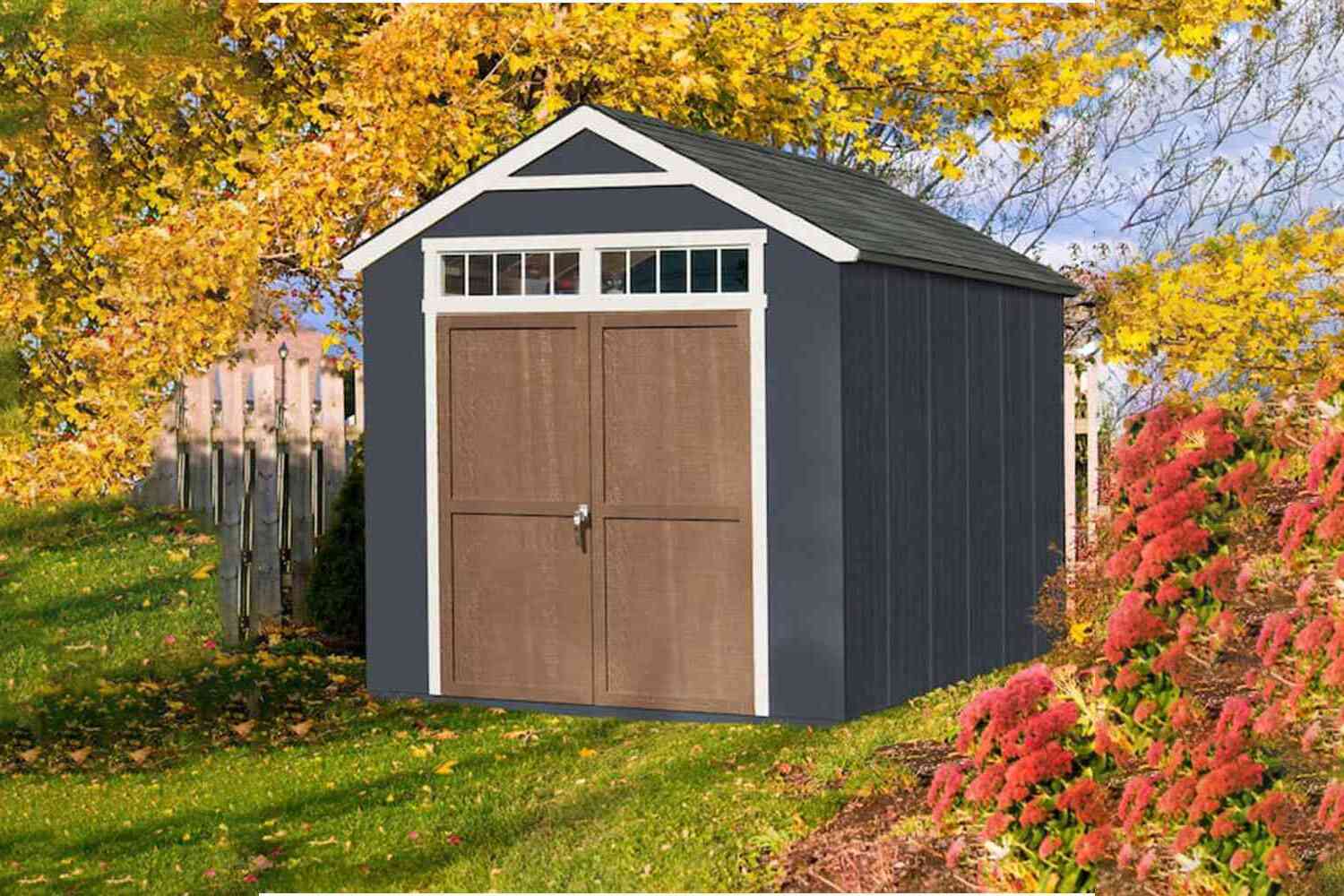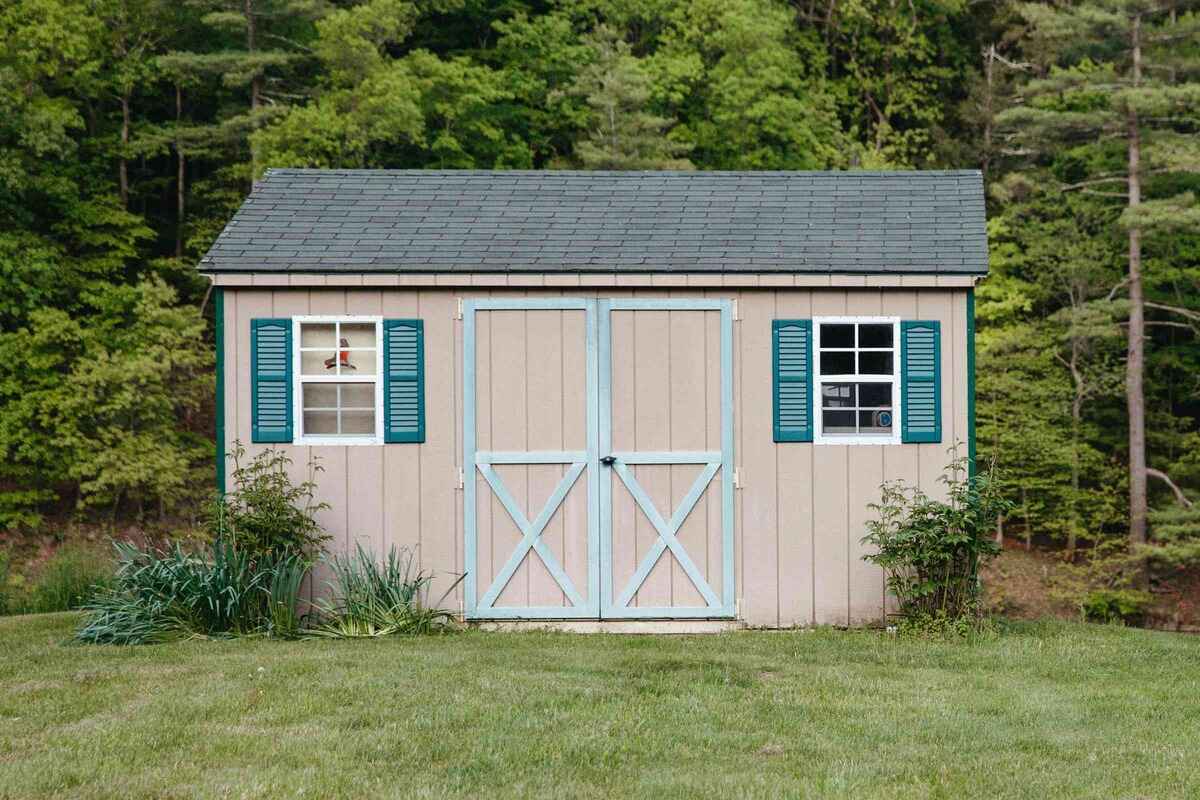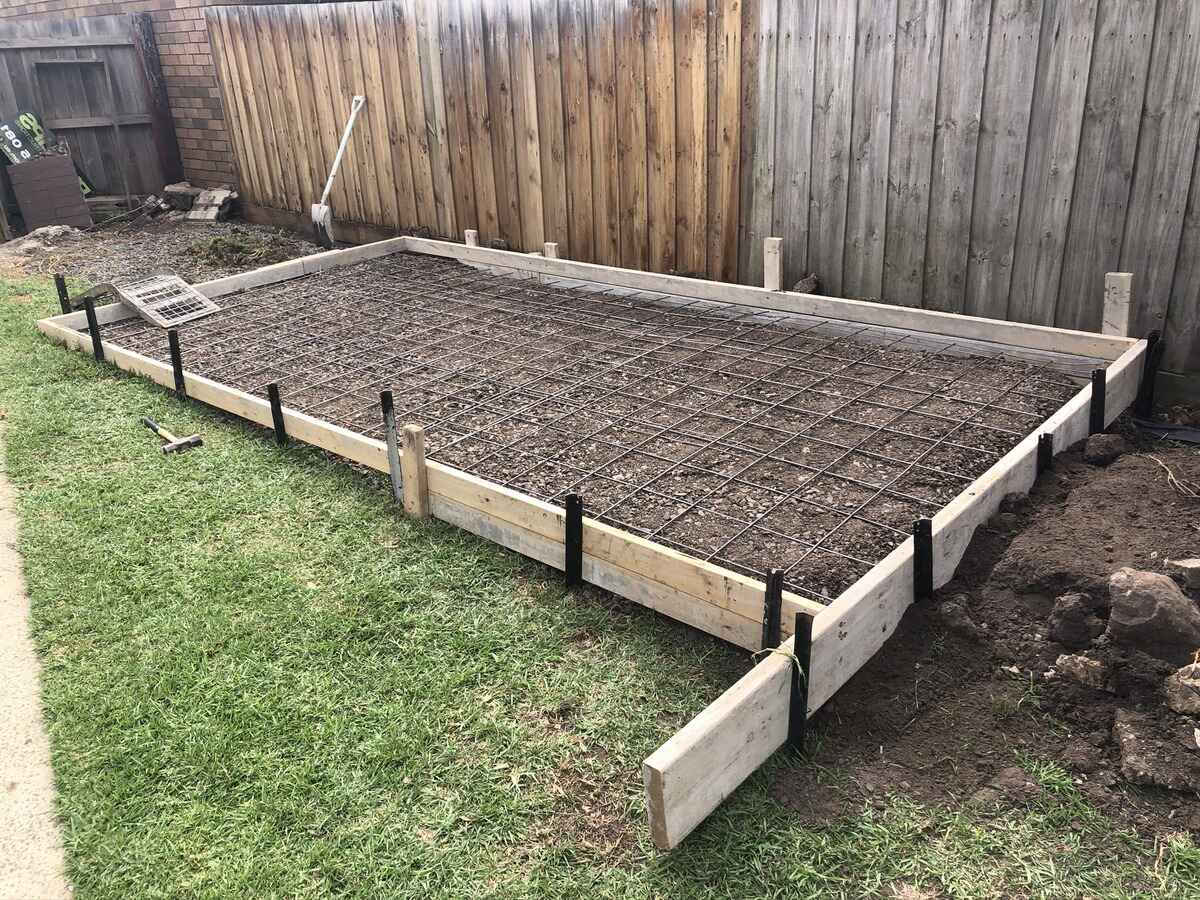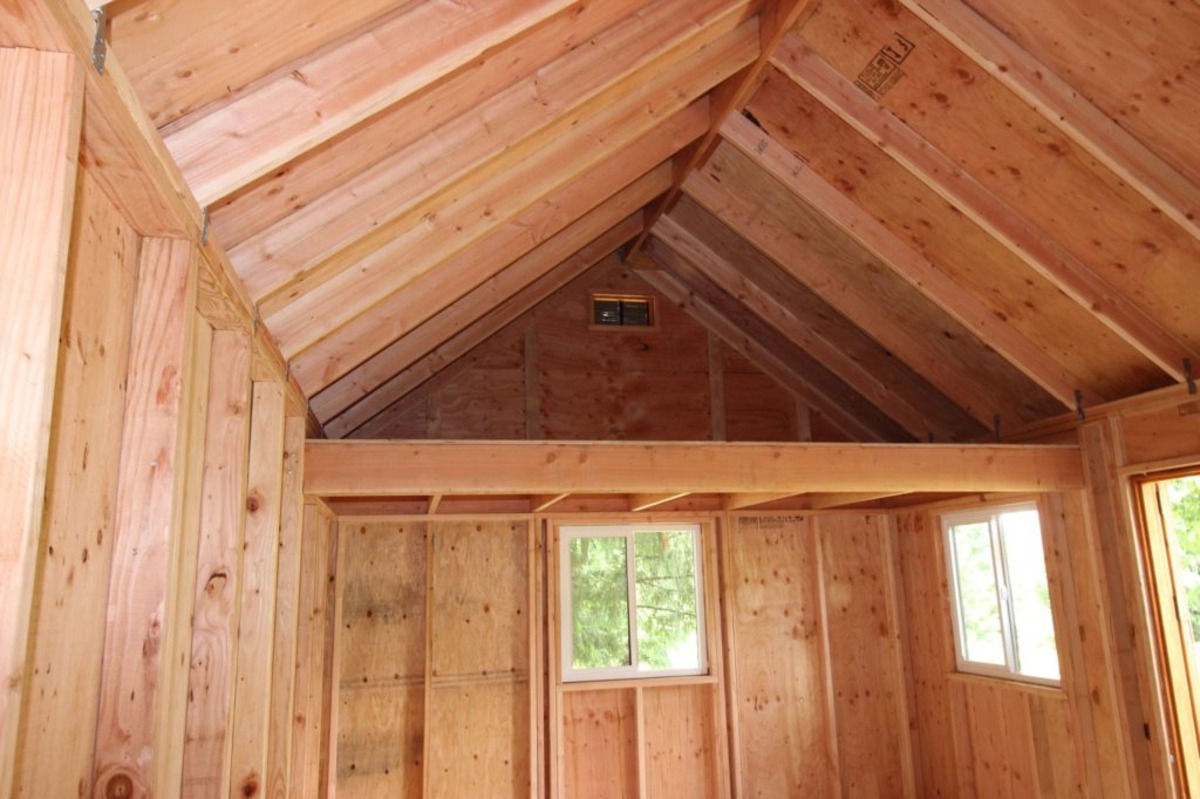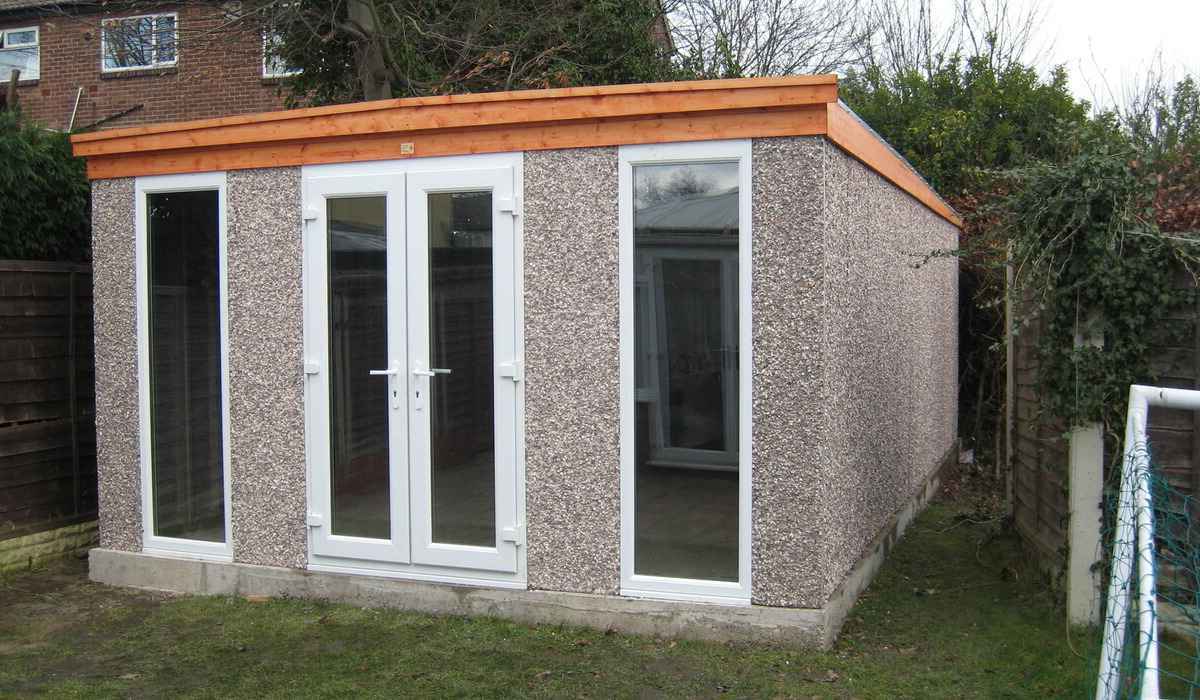Home>Create & Decorate>DIY & Crafts>How To Build A Shed Base On Grass
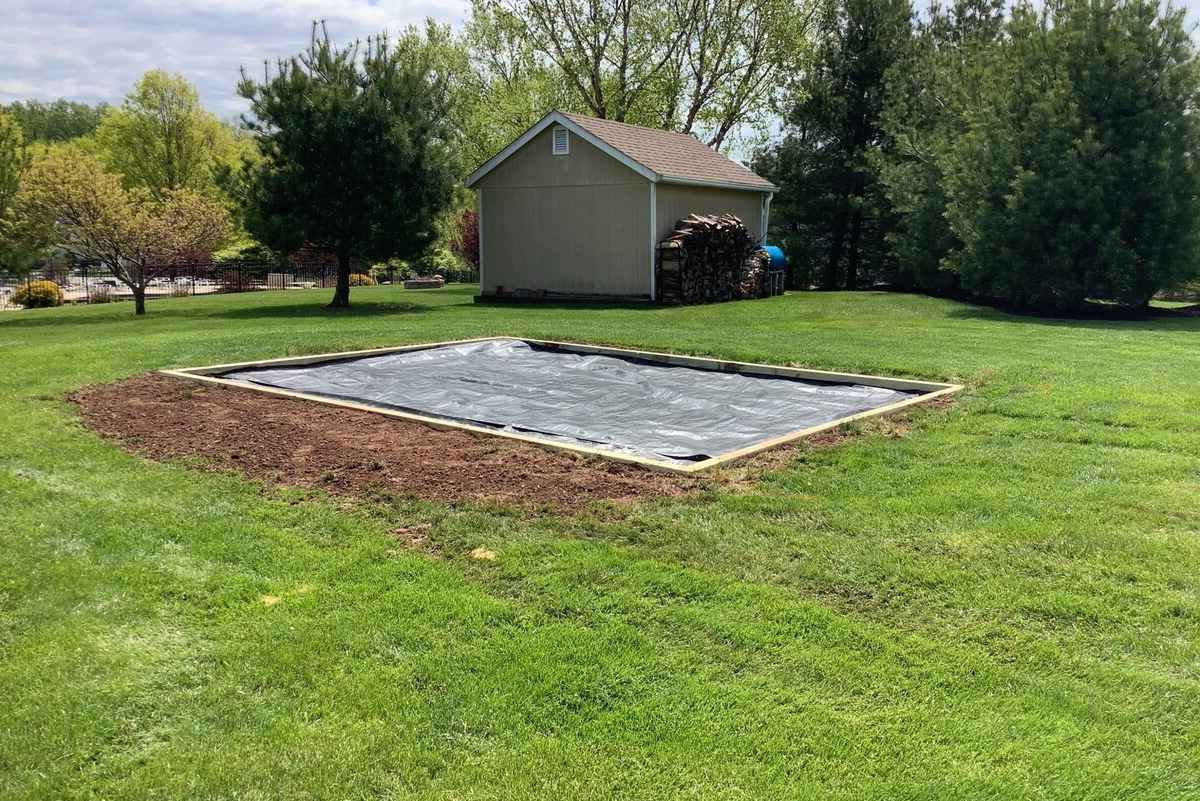

DIY & Crafts
How To Build A Shed Base On Grass
Published: February 23, 2024

Content Creator specializing in woodworking and interior transformations. Caegan's guides motivate readers to undertake their own projects, while his custom furniture adds a personal touch.
Learn how to build a shed base on grass with our easy DIY guide. Get step-by-step instructions and expert tips for your next DIY & Crafts project.
(Many of the links in this article redirect to a specific reviewed product. Your purchase of these products through affiliate links helps to generate commission for Twigandthistle.com, at no extra cost. Learn more)
Introduction
Building a shed in your backyard can be an exciting and rewarding project. Not only does it provide valuable storage space for your tools, equipment, and outdoor gear, but it also adds aesthetic and functional value to your property. However, before you can start assembling the shed itself, it's crucial to lay a solid foundation to ensure the structure's stability and longevity.
One of the most common dilemmas faced by DIY enthusiasts is how to build a shed base on grass. While it may seem like a daunting task, with the right guidance and a bit of elbow grease, you can create a sturdy and durable base that will support your shed for years to come. Whether you're a seasoned DIYer or a novice looking to embark on your first outdoor construction project, this comprehensive guide will walk you through the step-by-step process of building a shed base on grass.
By following these detailed instructions and tips, you'll gain the confidence and knowledge needed to tackle this project with ease. From clearing the area and marking out the base to adding a weed barrier, gravel, and securing the base, each step is essential in creating a solid foundation that will withstand the test of time. So, roll up your sleeves, gather your tools, and let's dive into the exciting world of building a shed base on grass.
Step 1: Clearing the Area
Before you can begin constructing a shed base on grass, it's essential to prepare the site by clearing the area of any obstructions and debris. This initial step sets the stage for a smooth and successful foundation-building process.
Start by removing any rocks, branches, or other debris from the designated area. This not only ensures a clean work environment but also prevents potential hazards during the construction process. Additionally, clear away any vegetation, such as grass, weeds, or small plants, to create a level surface for the base.
Next, assess the topography of the site to identify any uneven or sloping areas. Use a level or a long, straight board to determine the high and low points of the ground. If there are noticeable slopes, consider leveling the area by either filling in low spots with soil or digging down high points to achieve a more uniform surface.
In some cases, it may be necessary to trim overhanging tree branches or bushes to create ample space for the shed base. This step not only ensures that the base will have adequate clearance but also minimizes the risk of debris falling onto the shed in the future.
Furthermore, if the area is prone to water accumulation or poor drainage, take measures to address these issues before proceeding with the base construction. Proper drainage is crucial for preventing water from pooling around the shed, which can lead to structural damage over time.
By thoroughly clearing the area and addressing any potential obstacles or drainage concerns, you'll set the stage for a solid and stable foundation. This meticulous preparation lays the groundwork for the subsequent steps in building a shed base on grass, ensuring that the final result is both functional and long-lasting.
Step 2: Marking Out the Base
Marking out the base is a critical step in the process of building a shed base on grass. This phase sets the boundaries for the foundation and ensures that the structure will be positioned correctly within the designated area. By meticulously marking out the base, you lay the groundwork for a precise and well-aligned foundation.
To begin, gather the necessary tools for this task, including wooden stakes, a measuring tape, and string. Start by identifying the dimensions of the shed base, taking into account the size of the shed and any additional space required for maneuvering around the structure. Using the measuring tape, mark the corners of the base with wooden stakes, ensuring that they are positioned accurately according to the planned dimensions.
Next, connect the wooden stakes with string to outline the perimeter of the base. This visual boundary provides a clear reference for the foundation's placement and allows you to verify that the marked area aligns with your initial plans. It's essential to double-check the measurements and ensure that the string forms a perfect rectangle or square, depending on the shed's shape.
In addition to outlining the perimeter, consider marking the internal supports or anchor points within the base. If your shed design requires internal supports or specific anchor placements, use additional stakes and string to demarcate these locations within the base. This step is crucial for ensuring that the internal structure of the shed aligns with the foundation, promoting stability and structural integrity.
Furthermore, take into account any recommended setbacks or clearances from property lines, fences, or other structures. Adhering to these guidelines not only ensures compliance with local regulations but also prevents potential encroachments or obstructions in the future.
By meticulously marking out the base with precision and attention to detail, you establish a clear and accurate framework for the subsequent construction phases. This proactive approach minimizes the risk of errors and misalignments, setting the stage for a successful and well-structured shed base on grass.
Step 3: Digging the Foundation
With the area cleared and the base marked out, the next crucial step in building a shed base on grass is digging the foundation. This phase involves excavating the marked area to create a recessed space where the base will be positioned. The depth of the excavation will depend on the specific requirements of your shed design and the type of foundation you intend to build.
Before digging, it's essential to consider the soil composition and drainage characteristics of the site. If the soil is predominantly clay or compacted, you may need to exert additional effort to excavate the area effectively. Conversely, if the soil is loose or sandy, take precautions to prevent erosion and maintain the integrity of the excavation.
Using a shovel, spade, or a mechanical excavator if necessary, carefully dig out the marked area to the required depth, typically ranging from 4 to 6 inches for a basic shed base. However, for larger or more substantial structures, such as workshops or storage sheds, the depth may need to be increased to accommodate the additional weight and load-bearing requirements.
As you excavate, periodically check the depth using a tape measure or a level to ensure uniformity across the entire area. It's crucial to maintain a consistent depth throughout the foundation to prevent uneven settling or structural issues in the future.
In addition to the depth, pay attention to the overall shape and dimensions of the excavation. Ensure that the sides are straight and the corners are squared off, aligning with the marked perimeter. This precision is essential for creating a well-defined space that will accommodate the shed base securely and accurately.
Furthermore, as you dig, consider the potential need for additional features, such as drainage channels or utility access points. If your shed base requires specific provisions for drainage or underground utilities, incorporate these elements into the excavation process to streamline the subsequent construction phases.
By meticulously digging the foundation with attention to depth, shape, and any additional requirements, you establish a solid groundwork for the subsequent stages of building a shed base on grass. This meticulous approach ensures that the foundation is well-prepared to support the shed structure effectively and withstand the test of time.
Step 4: Adding a Weed Barrier
Once the foundation has been excavated for the shed base, the next crucial step is to add a weed barrier to prevent unwanted vegetation from encroaching on the base and compromising its integrity. A weed barrier serves as a protective layer that inhibits the growth of weeds and grass, ensuring that the shed base remains free from unwanted vegetation and maintains its stability over time.
To begin, select a high-quality weed barrier fabric or membrane designed specifically for outdoor use. These materials are typically permeable, allowing water to drain through while effectively blocking the growth of weeds. Lay the weed barrier fabric evenly across the excavated area, ensuring that it extends beyond the perimeter of the base to provide ample coverage.
Secure the weed barrier in place using landscape fabric staples or heavy-duty plastic pegs. These anchoring devices help keep the weed barrier taut and prevent it from shifting or being displaced during the subsequent construction phases. Additionally, ensure that the edges of the weed barrier overlap seamlessly to create a continuous and impenetrable barrier against unwanted vegetation.
Once the weed barrier is in place, inspect the entire surface to verify that there are no gaps or exposed areas where weeds could potentially penetrate. Address any gaps or loose sections by adjusting the positioning of the weed barrier and reinforcing it with additional staples or pegs as needed.
In addition to preventing weed growth, the weed barrier also acts as a protective barrier against moisture and soil erosion. By creating a barrier between the shed base and the underlying soil, it helps maintain the structural integrity of the base and minimizes the risk of water-related damage over time.
By adding a weed barrier to the excavated foundation, you establish a protective shield that safeguards the shed base against invasive vegetation and environmental factors. This proactive measure not only contributes to the longevity of the shed base but also reduces the need for ongoing maintenance and weed control, allowing you to focus on enjoying your newly constructed shed without the hassle of unwanted plant growth.
Step 5: Adding Gravel
Adding gravel to the shed base is a pivotal step that contributes to the stability, drainage, and longevity of the structure. The layer of gravel serves as a reliable foundation within the excavated area, offering essential support and mitigating potential issues associated with soil compaction and moisture retention.
To commence this phase, select high-quality, compactable gravel that is well-suited for construction and drainage purposes. Commonly used options include crushed stone, pea gravel, or angular rock, each offering distinct benefits in terms of stability and water permeability. It's crucial to ensure that the chosen gravel is free from organic matter and debris, as these impurities can compromise its effectiveness as a base material.
Once the appropriate gravel has been obtained, distribute it evenly across the excavated foundation, aiming for a uniform layer with a recommended depth of 3 to 4 inches. This depth provides adequate support for the shed base while facilitating efficient water drainage and minimizing the risk of soil settlement.
Using a rake or leveling tool, carefully spread the gravel to achieve a smooth and consistent surface. Pay close attention to the edges and corners, ensuring that the gravel layer extends to the boundaries of the marked base and maintains a level profile throughout. This meticulous approach promotes uniform weight distribution and minimizes the potential for uneven settling or shifting of the shed base over time.
As the gravel is spread, periodically compact the layer using a hand tamper or mechanical compactor to enhance its stability and load-bearing capacity. Compaction is essential for minimizing the risk of settling and ensuring that the gravel remains firmly in place, providing a solid and reliable foundation for the shed structure.
In addition to its structural benefits, the gravel layer facilitates effective drainage, preventing water accumulation and promoting soil stability. Proper drainage is crucial for safeguarding the shed base against moisture-related issues, such as erosion and soil displacement, ultimately contributing to the long-term durability of the structure.
By adding a carefully selected and properly installed layer of gravel to the shed base, you establish a robust and well-prepared foundation that is poised to support the shed structure effectively. This strategic addition not only enhances the structural integrity of the base but also contributes to its resilience against environmental factors, setting the stage for a successful and enduring shed construction project.
Step 6: Leveling the Base
Leveling the base is a critical phase in the construction of a shed base on grass, as it directly impacts the stability, alignment, and overall integrity of the structure. A level base ensures that the shed will be properly supported and that the subsequent assembly and installation processes will proceed smoothly. By meticulously leveling the base, you lay the groundwork for a structurally sound and aesthetically pleasing shed that will stand the test of time.
To begin the leveling process, use a long, straight board or a builder's level to assess the evenness of the gravel layer across the entire base. Check for any noticeable high or low spots, as well as any areas where the gravel may have shifted or settled unevenly during the installation process. Pay close attention to the corners and edges, as these areas are particularly prone to variations in elevation.
If discrepancies in the gravel level are identified, use additional gravel to fill in low spots and create a uniform surface. Distribute the gravel evenly and methodically, periodically checking the level to ensure that the base maintains a consistent profile. This meticulous approach minimizes the risk of uneven weight distribution and promotes a stable foundation for the shed.
In addition to the gravel layer, consider the overall slope and alignment of the base in relation to the surrounding terrain. If the site exhibits natural slopes or uneven ground, take measures to adjust the base's orientation to ensure that it is level and parallel to the ground. This step is crucial for promoting proper water drainage and preventing potential issues related to water runoff and soil erosion.
Furthermore, verify that the internal supports or anchor points within the base are aligned and level. If the shed design necessitates specific internal configurations or anchor placements, ensure that these elements are precisely positioned within the leveled base. This attention to detail promotes structural integrity and facilitates a seamless transition to the subsequent stages of shed construction.
By meticulously leveling the base with precision and care, you establish a solid and well-aligned foundation that forms the cornerstone of the shed structure. This proactive approach minimizes the risk of structural issues and ensures that the subsequent assembly and installation processes will proceed with ease, setting the stage for a successful and enduring shed construction project.
Step 7: Securing the Base
Securing the shed base is the final crucial step in the process of building a shed base on grass. This phase involves anchoring the base to the ground to ensure stability, resistance to shifting, and long-term durability. By effectively securing the base, you fortify the foundation and create a reliable platform for the shed structure, safeguarding it against potential environmental forces and ensuring its structural integrity.
To begin the securing process, consider using ground anchors or foundation straps designed specifically for outdoor construction projects. These anchoring solutions are engineered to provide robust support and resistance to lateral movement, effectively securing the shed base in place. Select anchors or straps that are suitable for the size and weight of your shed, ensuring that they meet the necessary load-bearing requirements.
Position the ground anchors or straps at strategic intervals along the perimeter of the shed base, ensuring that they are evenly spaced and securely anchored to the ground. If the shed design includes internal supports or anchor points, incorporate additional anchors or straps to reinforce these critical areas, promoting comprehensive stability and structural cohesion.
Once the anchors or straps are in place, secure them to the shed base using appropriate fastening hardware, such as bolts, screws, or clamps. It's essential to follow the manufacturer's guidelines and recommendations for the installation of the anchoring system, ensuring that the fasteners are tightened to the specified torque and that the connections are secure and reliable.
In addition to ground anchors and straps, consider utilizing concrete footings or piers to further enhance the stability and load-bearing capacity of the shed base. Concrete footings provide a solid and immovable foundation, effectively anchoring the shed base to the ground and minimizing the risk of shifting or settling over time. When incorporating concrete footings, ensure that they are positioned at strategic points within the base and that they are properly aligned and leveled to support the shed structure effectively.
Furthermore, if the shed base is intended to support heavy equipment, machinery, or vehicles, consider reinforcing the anchoring system with additional measures, such as steel tie-downs or reinforced concrete footings. These enhancements provide added strength and resilience, ensuring that the shed base can withstand substantial loads and external forces without compromising its stability or structural integrity.
By meticulously securing the shed base with a comprehensive anchoring system and strategic reinforcements, you establish a robust and resilient foundation that is poised to support the shed structure effectively. This proactive approach minimizes the risk of shifting, settling, or structural issues, ensuring that the completed shed base on grass is well-prepared to withstand the rigors of everyday use and environmental factors, setting the stage for a successful and enduring outdoor storage solution.
Conclusion
In conclusion, building a shed base on grass is a rewarding endeavor that requires careful planning, meticulous preparation, and precise execution. By following the step-by-step process outlined in this guide, DIY enthusiasts and homeowners can create a solid foundation that not only supports the shed structure but also withstands the test of time.
From the initial steps of clearing the area and marking out the base to the critical phases of digging the foundation, adding a weed barrier, and incorporating gravel, each stage plays a pivotal role in establishing a stable and durable shed base. The meticulous attention to detail, from leveling the base to securing it firmly to the ground, ensures that the completed foundation is well-prepared to support the shed structure effectively.
By clearing the area of debris and vegetation, homeowners create a clean and level space for the shed base, setting the stage for a smooth and efficient construction process. Marking out the base with precision and attention to detail establishes the boundaries and alignment for the foundation, laying the groundwork for a well-positioned and structurally sound shed.
The process of digging the foundation and adding a weed barrier contributes to the stability and longevity of the shed base, safeguarding it against potential issues related to soil compaction, moisture retention, and unwanted vegetation growth. The strategic addition of gravel not only provides essential support but also facilitates efficient drainage, minimizing the risk of water-related damage and soil settlement.
Furthermore, the meticulous leveling of the base and the comprehensive securing of the foundation ensure that the shed base is well-aligned, stable, and resistant to shifting or settling. These proactive measures fortify the foundation, creating a reliable platform for the shed structure and safeguarding it against potential environmental forces.
In essence, building a shed base on grass is a multifaceted process that demands attention to detail, careful consideration of the site's characteristics, and a commitment to quality construction. By following the guidelines outlined in this comprehensive guide, homeowners can embark on their shed construction journey with confidence, knowing that they have laid a solid foundation for a successful and enduring outdoor storage solution.

